Kelly Jensen's Blog, page 128
November 15, 2013
Contemporary YA Books Featuring Family Stories
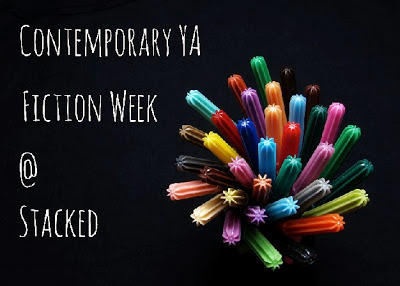
It's book list time! To go along with Amy's post about why she writes about family in her contemporary YA, I thought it'd be worth highlighting some of the many books featuring strong family story lines within them. Not all of these books feature family at the forefront, but they all do feature some significant element of family -- be it a parental relationship, a lack of parental relationship, or sibling relationships. They run the gamut in experiences and exploration of what family is or is not. And in some cases, the family story is the fact that there is no family present, but it's that lack and want for it that impacts the character significantly.
All of these titles are from within the last two to three years, and all descriptions come from WorldCat, unless otherwise noted. This is, of course, an incomplete list, and I would love to hear of other recent contemporary YA that showcases strong, unique, or dynamic family life, so feel free to leave other titles in the comments. I'd be especially interested to know about more non-traditional families, including those featuring adoption, step-siblings, grandparents or other relatives who are primary caretakers, or remarriage. Please also point me to more stories featuring families of color that have come out in the last two or three years.
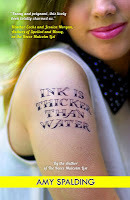
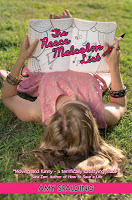
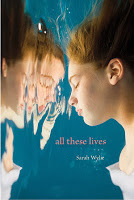
Ink is Thicker Than Water by Amy Spalding: For Kellie Brooks, family has always been a tough word to define. Combine her hippie mom and tattooist stepdad, her adopted overachieving sister, her younger half brother, and her tough-love dad, and average Kellie’s the one stuck in the middle, overlooked and impermanent. When Kellie’s sister finally meets her birth mother and her best friend starts hanging with a cooler crowd, the feeling only grows stronger. But then she reconnects with Oliver, the sweet and sensitive college guy she had a near hookup with last year. Oliver is intense and attractive, and she’s sure he’s totally out of her league. But as she discovers that maybe intensity isn’t always a good thing, it’s yet another relationship she feels is spiraling out of her control. It’ll take a new role on the school newspaper and a new job at her mom’s tattoo shop for Kellie to realize that defining herself both outside and within her family is what can finally allow her to feel permanent, just like a tattoo. (via GoodReads)
The Reece Malcolm List by Amy Spalding: When her father dies suddenly, Devan is shipped off to Los Angeles to live with her estranged mother, Reece Malcolm, a bestselling novelist with little time for a daughter, and Devan navigates her way through her new performing arts school.
All These Lives by Sarah Wylie: Convinced that she has nine lives after cheating death twice as a child, sixteen-year-old Dani tries to forfeit her remaining lives in hopes of saving her twin sister, Jena, whose leukemia is consuming their family.
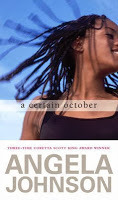
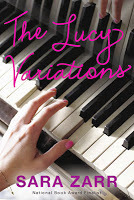
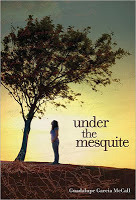
A Certain October by Angela Johnson: Scotty compares herself to tofu: no flavor unless you add something. And it's true that Scotty's friends, Misha and Falcone, and her brother, Keone, make life delicious. But when a terrible accident occurs, Scotty feels responsible for the loss of someone she hardly knew, and the world goes wrong. She cannot tell what is a dream and what is real. Her friends are having a hard time getting through to her and her family is preoccupied with their own trauma. But the prospect of a boy, a dance, and the possibility that everything can fall back into place soon help Scotty realize that she is capable of adding her own flavor to life.
The Lucy Variations by Sara Zarr: Sixteen-year-old San Franciscan Lucy Beck-Moreau once had a promising future as a concert pianist. Her chance at a career has passed, and she decides to help her ten-year-old piano prodigy brother, Gus, map out his own future, even as she explores why she enjoyed piano in the first place.
Under the Mesquite by Guadalupe Garcia McCall: Throughout her high school years, as her mother battles cancer, Lupita takes on more responsibility for her house and seven younger siblings, while finding refuge in acting and writing poetry.
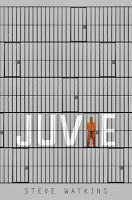
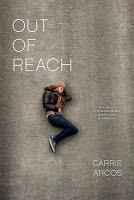
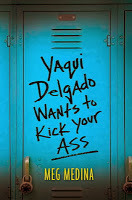
Juvie by Steve Watkins: Working hard to be a contributing member of her family, Sadie accepts blame for her sister's drug deal to keep the latter out of prison and finds everything she worked for threatened by a six-month sentence that tests her sister's character.
Out of Reach by Carrie Arcos: Accompanied by her brother's friend, Tyler, sixteen-year-old Rachel ventures through San Diego and nearby areas seeking her brother, eighteen-year-old Micah, a methamphetamine addict who ran away from home.
Yaqui Delgado Wants to Kick Your Ass by Meg Medina: One morning before school, some girl tells Piddy Sanchez that Yaqui Delgado hates her and wants to kick her ass. Piddy doesn't even know who Yaqui is, never mind what she's done to piss her off. Word is that Yaqui thinks Piddy is stuck-up, shakes her stuff when she walks, and isn't Latin enough with her white skin, good grades, and no accent. And Yaqui isn't kidding around, so Piddy better watch her back. At first Piddy is more concerned with trying to find out more about the father she's never met and how to balance honors courses with her weekend job at the neighborhood hair salon. But as the harassment escalates, avoiding Yaqui and her gang starts to take over Piddy's life. Is there any way for Piddy to survive without closing herself off or running away?
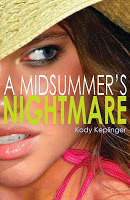
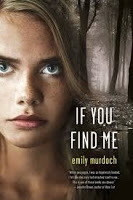
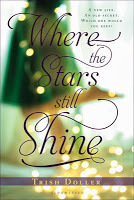
A Midsummer's Nightmare by Kody Keplinger: Suffering a hangover from a graduation party, eighteen-year-old Whitley is blindsided by the news that her father has moved into a house with his fiancée, her thirteen-year-old daughter Bailey, and her son Nathan, in whose bed Whitley had awakened that morning.
If You Find Me by Emily Murdoch: There are some things you can't leave behind... A broken-down camper hidden deep in a national forest is the only home fifteen year-old Carey can remember. The trees keep guard over her threadbare existence, with the one bright spot being Carey's younger sister, Jenessa, who depends on Carey for her very survival. All they have is each other, as their mentally ill mother comes and goes with greater frequency. Until that one fateful day their mother disappears for good, and two strangers arrive. Suddenly, the girls are taken from the woods and thrust into a bright and perplexing new world of high school, clothes and boys. Now, Carey must face the truth of why her mother abducted her ten years ago, while haunted by a past that won't let her go... a dark past that hides many a secret, including the reason Jenessa hasn't spoken a word in over a year. Carey knows she must keep her sister close, and her secrets even closer, or risk watching her new life come crashing down.
Where the Stars Still Shine by Trish Doller: Abducted at age five, Callie, now seventeen, has spent her life on the run but when her mother is finally arrested and she is returned to her father in small-town Florida, Callie must find a way to leave her past behind, become part of a family again, and learn that love is more than just a possibility.
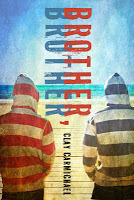
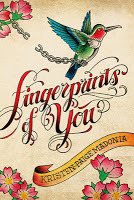
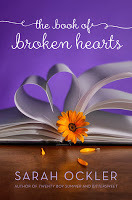
Brother, Brother by Clay Carmichael: After his grandmother's death, seventeen-year-old Brother sets out, with the abandoned son of a friend, on a 200-mile trip to North Carolina's Outer Banks to find his twin brother, of whose existence he just learned.
Fingerprints of You by Kristen-Paige Maldonia: After spending her life moving from place to place with her single mother, pregnant seventeen-year-old Lemon takes a bus to San Francisco to seek the father she never knew, as well as truths about her mother and herself.
The Book of Broken Hearts by Sarah Ockler: Jude has learned a lot from her older sisters, but the most important thing is this: The Vargas brothers are notorious heartbreakers. But as Jude begins to fall for Emilio Vargas, she begins to wonder if her sisters were wrong.
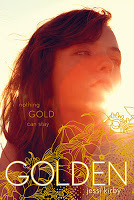
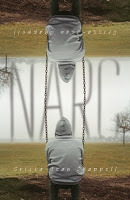
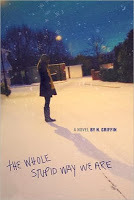
Golden by Jessi Kirby: Seventeen-year-old Parker Frost has never taken the road less traveled. Valedictorian and quintessential good girl, she's about to graduate high school without ever having kissed her crush or broken the rules. So when fate drops a clue in her lap--one that might be the key to unraveling a town mystery--she decides to take a chance.
Narc by Crissa-Jean Chappell: When his little sister is caught with a bag of weed, seventeen-year-old Aaron Foster takes the fall. To keep the cops from tearing his family apart, Aaron agrees to go undercover and help bust the dealer who's funneling drugs into his Miami high school. But making friends with the school's biggest players isn't easy for a waste-case loner from the wrong part of town.
The Whole Stupid Way We Are by N. Griffin: During a cold winter in Maine, fifteen-year-old Dinah sets off a heart-wrenching chain of events when she tries to help best friend and fellow misfit Skint deal with problems at home, including a father who is suffering from early onset dementia.
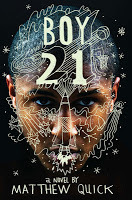
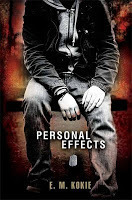
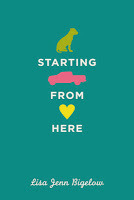
Boy21 by Matthew Quick: Finley, an unnaturally quiet boy who is the only white player on his high school's varsity basketball team, lives in a dismal Pennsylvania town that is ruled by the Irish mob, and when his coach asks him to mentor a troubled African American student who has transferred there from an elite private school in California, he finds that they have a lot in common in spite of their apparent differences.
Personal Effects by E. M. Kokie: Matt has been sleepwalking through life while seeking answers about his brother T.J.'s death in Iraq, but after discovering that he may not have known his brother as well as he thought he did, Matt is able to stand up to his father, honor T.J.'s memory, and take charge of his own life.
Starting From Here by Lisa Jenn Bigelow: Sixteen-year-old Colby is barely hanging on with her mother dead, her long-haul trucker father often away, her almost-girlfriend dumping her for a boy, and her failing grades, when a stray dog appears and helps her find hope.
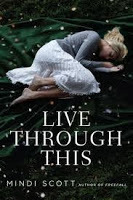
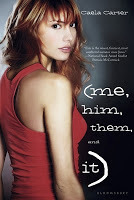
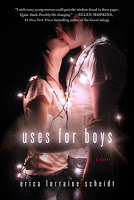
Live Through This by Mindi Scott: From the outside, fifteen-year-old Coley Sterling's life seems imperfect but normal, but for years she has buried her shame and guilt over a relationship that crossed the line and now that she has a chance at having a real boyfriend, Reece, the lies begin to unravel.
Me, Him, Them, and It by Caela Carter: Playing the "bad girl" at school to get back at her feuding parents, sixteen-year-old Evelyn becomes pregnant and faces a difficult decision.
Uses for Boys by Erica Lorraine Scheidt: Anna remembers a time before boys, when she was little and everything made sense. When she and her mom were a family, it was just the two of them against the world. But now her mom's gone most of the time, chasing the next marriage, the next stepfather. Anna gets used to being alone, until she discovers that she can make boys her family, from Desmond to Joey to Todd. But filling the void comes at a price.
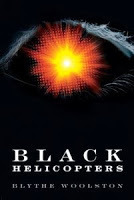
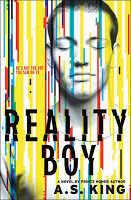
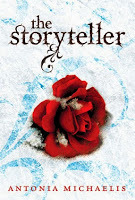
Black Helicopters by Blythe Woolston: In a day-after-tomorrow Montana, fifteen-year-old Valley (now Valkyrie) and her big brother leave their underground den to fight a government that will kill them like coyotes. (Kelly refutes this is a "day after" sort of novel -- it's wholly contemporary in her read).
Reality Boy by A. S. King: An emotionally damaged seventeen-year-old boy in Pennsylvania, who was once an infamous reality television show star, meets a girl from another dysfunctional family, and she helps him out of his angry shell.
The Storyteller by Antonia Michaelis: Wealthy, seventeen-year-old Anna begins to fall in love with her classmate, Abel, a drug dealer from the wrong side of town, when she hears him tell a story to his six-year-old sister, but when his enemies begin turning up dead, Anna fears she has fallen for a murderer.

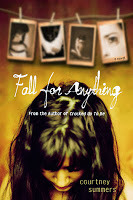
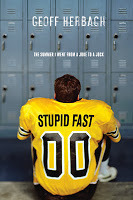
Don't Breathe A Word by Holly Cupala: Joy Delamere is suffocating from severe asthma, overprotective parents, and an emotionally-abusive boyfriend when she escapes to the streets of nearby Seattle and falls in with a "street family" that teaches her to use a strength she did not know she had.
Fall for Anything by Courtney Summers: As she searches for clues that would explain the suicide of her successful photographer father, Eddie Reeves meets the strangely compelling Culler Evans who seems to know a great deal about her father and could hold the key to the mystery surrounding his death.
Stupid Fast by Geoff Herbach (the entire series): Just before his sixteenth birthday, Felton Reinstein has a sudden growth spurt that turns him from a small, jumpy, picked-on boy with the nickname of "Squirrel Nut" to a powerful athlete, leading to new friends, his first love, and the courage to confront his family's past and current problems.







 Related StoriesContemporary YA Down Under: Australian Realistic Fiction Guest Post by Simmone Howell (Everything Beautiful)Contemporary YA Books Featuring HumorFamily Life in Contemporary YA Fiction: Guest Post by Amy Spalding (Reece Malcolm List)
Related StoriesContemporary YA Down Under: Australian Realistic Fiction Guest Post by Simmone Howell (Everything Beautiful)Contemporary YA Books Featuring HumorFamily Life in Contemporary YA Fiction: Guest Post by Amy Spalding (Reece Malcolm List)
Published on November 15, 2013 10:00
November 14, 2013
Family Life in Contemporary YA Fiction: Guest Post by Amy Spalding (Reece Malcolm List)
As you may or may not remember, last fall I was part of a panel at the YALSA YA Lit Symposium all about contemporary YA fiction. At the very end of the panel, the audience had the chance to ask us questions or share comments, and one of the comments that stood out at me was that there aren't quite as many representations of family in its varied and diverse forms as she wishes there were. Sure, we see divorced families and we see families where a parent is deceased, but there aren't quite as many books out there about parents choosing to date again, remarriages, adoption, or other "non-traditional" family structures.
On the spot, I couldn't point out books that did feature any of those things. Of course, on the drive home from the event, I immediately thought of Amy Spalding's The Reece Malcolm List, which features a mom who is dating (but not yet remarried), along with many other interesting family-centric elements. Amy's second book, Ink is Thicker Than Water, also tackles many dynamic aspects of family life, and it only seemed natural to ask her to talk about writing family in contemporary YA.
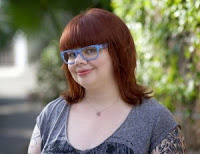 Amy Spalding grew up outside of St. Louis. She now lives in Los Angeles with two cats and a dog. She works in marketing and does a lot of improv. She has more tattoos than she can count.
Amy Spalding grew up outside of St. Louis. She now lives in Los Angeles with two cats and a dog. She works in marketing and does a lot of improv. She has more tattoos than she can count.
Amy would love for you to visit her online at www.theamyspalding.com or on Twitter @theames.
Family & YA
I didn't mean to write family-centric YA.
Actually, I didn't mean to write YA at all, but let's back up.
Growing up, I loved reading books about family. I had parents who were still happily married and a sibling who lived a very separate life from me. So what I didn't live in life? I wanted out of my books. I craved the (fictional) intricacies of divorce and separation and long distance. I voyeuristically experienced brothers who helped with your schemes and sisters who told you smart things about lip gloss.
As I got older, my reading taste became more sophisticated…or perhaps trashier. I couldn’t get enough of long-lost family members. I wanted to know deep, dark family secrets.
As I wrote about teens and their families, at a certain point I did luckily realize I was writing young adult literature. But something I definitely didn’t know until someone pointed it out to me is I spent a lot of time writing about family.
To me it went without saying that family would show up a lot in a YA novel, even if one wasn’t perhaps so, er, obsessive about fictional families. Like me. Teens generally still live at home or at least in some manner under the charge of their parents. When you’re a teenager, your parents control a lot of your life—even and especially if you don’t want them to.
It’s this especially I saw the most of in YA. Parents were the roadblocks—to romance, to love, to sex, to hobbies, to extracurriculars, to cool afterschool jobs.
But I’ll be honest: that wasn’t what it was like for me, and it wasn’t what it was like for a lot of my friends. Our parents were around and fairly supportive—I mean, my parents were going to let me be a theatre major without too much squawking—and I didn’t have a curfew and I didn’t really get into any real trouble.
The stuff that came up was less surface and harder to describe than that. Suddenly I had a lot of thoughts about where I fit into the world and, therefore, into my family. Where did I want to live my life—definitely not St. Louis, and so did it mean I was somehow inherently different from Mom and Dad who seemed happy to be there their whole lives? Who was I, deep down—and was that Amy a different person than my parents thought I was? And if she was, did that change everything, somehow?
The main character in my new book, Ink Is Thicker than Water, Kellie, is going through a lot of this. With friendships changing, a new relationship, and some shifts within her family, Kellie has to figure out how she fits into all of that. She’s always been the comic relief who isn’t scared of anything and who never shows too much emotion. She finds out there’s not only more to her than that but that she’d like to change her life to explore new sides of herself. If she’s taking new paths and becoming a new Kellie, does that mean she has to relearn how her family works?
I think all of us have been nervous, and not just as kids, to take steps forward in live and unambiguously state I want this. Wanting more out of life is scary enough—telling people who’ve known you basically forever is another level entirely. Kellie might be nervous how people react to the girl who never cares too much about anything suddenly joining the school newspaper, but a lot of us deal with some variation of this over and over in life. Our family has one idea of us and how we function, and it can take some bravery to change that.
In my first book, The Reece Malcolm List, Devan already knows what she wants in life. She’s the kind of teenager who’s so driven in her quest—specifically to perform in musical theatre—she puts tons of adults to shame. But at sixteen, she’s shipped off to live with the mother she’s never known—and suddenly everything else has to be reevaluated. If she’s not the girl who’s never known her own mom anymore, who is she now? (Obviously I wrote this book because of my long-lost family obsession!) Sure, Devan uses her list and Google, but it’s not unusual in your teen years to suddenly wonder just who the heck these people are who raised you! I think it’s incredibly common to go through a period of figuring out who your parents are as people, not just Mom and Dad.
This all sounds really serious, but also I just love writing family! Let’s be real: I am an old lady, and that makes me much closer to the age of my main characters’ parents than them. (Ugh, I’m actually older than Reece Malcolm and Brad Harper, which is a bit mind-boggling, huh.) There’s no reason not to make these characters actual people with their own awkwardnesses and quirks and wants and needs. Lots of adults read YA, so why not give them characters their own age who seem like fully-realized people? And when I was a teenager, I loved reading what adults were getting up to. It all felt very grown-up and glamorous—so maybe it’s good to adjust those expectations a bit!
I guess the truth is that the older I get the less distance I feel. We’re all just people. Family might be this weird unit with its own set of expectations and rules, but these are also just other people. And that’s what I try to reflect when I write.






 Related StoriesPaging Back: Diversity in Contemporary YA, The Role of Sports, Contemporary Series Books, and Girls of All Flavors.Contemporary YA Down Under: Australian Realistic Fiction Guest Post by Simmone Howell (Everything Beautiful)Contemporary YA Books Featuring Humor
Related StoriesPaging Back: Diversity in Contemporary YA, The Role of Sports, Contemporary Series Books, and Girls of All Flavors.Contemporary YA Down Under: Australian Realistic Fiction Guest Post by Simmone Howell (Everything Beautiful)Contemporary YA Books Featuring Humor
On the spot, I couldn't point out books that did feature any of those things. Of course, on the drive home from the event, I immediately thought of Amy Spalding's The Reece Malcolm List, which features a mom who is dating (but not yet remarried), along with many other interesting family-centric elements. Amy's second book, Ink is Thicker Than Water, also tackles many dynamic aspects of family life, and it only seemed natural to ask her to talk about writing family in contemporary YA.
 Amy Spalding grew up outside of St. Louis. She now lives in Los Angeles with two cats and a dog. She works in marketing and does a lot of improv. She has more tattoos than she can count.
Amy Spalding grew up outside of St. Louis. She now lives in Los Angeles with two cats and a dog. She works in marketing and does a lot of improv. She has more tattoos than she can count.
Amy would love for you to visit her online at www.theamyspalding.com or on Twitter @theames.
Family & YA
I didn't mean to write family-centric YA.
Actually, I didn't mean to write YA at all, but let's back up.
Growing up, I loved reading books about family. I had parents who were still happily married and a sibling who lived a very separate life from me. So what I didn't live in life? I wanted out of my books. I craved the (fictional) intricacies of divorce and separation and long distance. I voyeuristically experienced brothers who helped with your schemes and sisters who told you smart things about lip gloss.
As I got older, my reading taste became more sophisticated…or perhaps trashier. I couldn’t get enough of long-lost family members. I wanted to know deep, dark family secrets.
As I wrote about teens and their families, at a certain point I did luckily realize I was writing young adult literature. But something I definitely didn’t know until someone pointed it out to me is I spent a lot of time writing about family.
To me it went without saying that family would show up a lot in a YA novel, even if one wasn’t perhaps so, er, obsessive about fictional families. Like me. Teens generally still live at home or at least in some manner under the charge of their parents. When you’re a teenager, your parents control a lot of your life—even and especially if you don’t want them to.
It’s this especially I saw the most of in YA. Parents were the roadblocks—to romance, to love, to sex, to hobbies, to extracurriculars, to cool afterschool jobs.
But I’ll be honest: that wasn’t what it was like for me, and it wasn’t what it was like for a lot of my friends. Our parents were around and fairly supportive—I mean, my parents were going to let me be a theatre major without too much squawking—and I didn’t have a curfew and I didn’t really get into any real trouble.
The stuff that came up was less surface and harder to describe than that. Suddenly I had a lot of thoughts about where I fit into the world and, therefore, into my family. Where did I want to live my life—definitely not St. Louis, and so did it mean I was somehow inherently different from Mom and Dad who seemed happy to be there their whole lives? Who was I, deep down—and was that Amy a different person than my parents thought I was? And if she was, did that change everything, somehow?
The main character in my new book, Ink Is Thicker than Water, Kellie, is going through a lot of this. With friendships changing, a new relationship, and some shifts within her family, Kellie has to figure out how she fits into all of that. She’s always been the comic relief who isn’t scared of anything and who never shows too much emotion. She finds out there’s not only more to her than that but that she’d like to change her life to explore new sides of herself. If she’s taking new paths and becoming a new Kellie, does that mean she has to relearn how her family works?
I think all of us have been nervous, and not just as kids, to take steps forward in live and unambiguously state I want this. Wanting more out of life is scary enough—telling people who’ve known you basically forever is another level entirely. Kellie might be nervous how people react to the girl who never cares too much about anything suddenly joining the school newspaper, but a lot of us deal with some variation of this over and over in life. Our family has one idea of us and how we function, and it can take some bravery to change that.
In my first book, The Reece Malcolm List, Devan already knows what she wants in life. She’s the kind of teenager who’s so driven in her quest—specifically to perform in musical theatre—she puts tons of adults to shame. But at sixteen, she’s shipped off to live with the mother she’s never known—and suddenly everything else has to be reevaluated. If she’s not the girl who’s never known her own mom anymore, who is she now? (Obviously I wrote this book because of my long-lost family obsession!) Sure, Devan uses her list and Google, but it’s not unusual in your teen years to suddenly wonder just who the heck these people are who raised you! I think it’s incredibly common to go through a period of figuring out who your parents are as people, not just Mom and Dad.
This all sounds really serious, but also I just love writing family! Let’s be real: I am an old lady, and that makes me much closer to the age of my main characters’ parents than them. (Ugh, I’m actually older than Reece Malcolm and Brad Harper, which is a bit mind-boggling, huh.) There’s no reason not to make these characters actual people with their own awkwardnesses and quirks and wants and needs. Lots of adults read YA, so why not give them characters their own age who seem like fully-realized people? And when I was a teenager, I loved reading what adults were getting up to. It all felt very grown-up and glamorous—so maybe it’s good to adjust those expectations a bit!
I guess the truth is that the older I get the less distance I feel. We’re all just people. Family might be this weird unit with its own set of expectations and rules, but these are also just other people. And that’s what I try to reflect when I write.







 Related StoriesPaging Back: Diversity in Contemporary YA, The Role of Sports, Contemporary Series Books, and Girls of All Flavors.Contemporary YA Down Under: Australian Realistic Fiction Guest Post by Simmone Howell (Everything Beautiful)Contemporary YA Books Featuring Humor
Related StoriesPaging Back: Diversity in Contemporary YA, The Role of Sports, Contemporary Series Books, and Girls of All Flavors.Contemporary YA Down Under: Australian Realistic Fiction Guest Post by Simmone Howell (Everything Beautiful)Contemporary YA Books Featuring Humor
Published on November 14, 2013 22:00
Paging Back: Diversity in Contemporary YA, The Role of Sports, Contemporary Series Books, and Girls of All Flavors.

Because Simmone offered up a nice selection of Australian contemporary YA in her post this morning, I didn't want to replicate the book list effort. So instead, let's take a look back at some older posts that tackle different aspects of contemporary YA. First up, let's talk about diversity -- a topic that is perfectly fitting with our look at contemporary books published on the other side of the world.
"That’s not to say that we should immediately veto all novels that seem to draw on stereotypes. A crucial strategy in some narratives is to engage a stereotype up to a point so as to gradually dismantle it through the course of the narrative. This is what I try to do, for example, with the trope of the Hispanic family as a barrier to individual success in What Can’t Wait. While the protagonist struggles with her family’s ever-increasing expectations, in the end several members of her family rally around her to help her overcome her own personal crisis. Similarly, while I have a Latino dropout and gang member narrate The Knife and the Butterfly, his misogynist views and macho bravado gradually peel away as he comes closer and closer to total desperation."
-- from Ashley Hope Perez's Diversity in Contemporary YA fiction.
This is a topic I continue to think about, especially in light of bigger conversations coming out of last weekend's Kid Lit Con about what diversity means and what role bloggers can play in bringing issues of diversity within kid lit to light. I made a companion book list to go with Ashley's post last fall, so it doesn't include anything from this year, but it's still worth exploring.
~*~
What role does sports play in contemporary YA fiction? What about the "sports" book?
"I was at a Wisconsin High School a few weeks back. I talked books in front of a group of maybe 100 kids. It was a Friday afternoon, last hour. Probably thirty percent of the attendees wore some form of football jersey or t-shirt (the school had a game later that evening). While a couple of the jersey wearers were obviously larger and tougher-looking than the general audience, most looked like regular kids who might just as easily have been mathletes or band geeks or whatever, except they wore a jersey. This picture confirmed something I already knew: at most schools there isn’t a stereotypical jock monolith filled with steroidal bruisers hell-bent on crushing the spirits of nerds. Most athletes are just your average kid.
Whatever average means. The starting quarterback at the school I visited was also the lead in the musical."
-- from Geoff Herbach's Why I Write About Sports. And it should be noted, too, that sports books aren't "books for boys." They're books for any readers, regardless of whether they've a vested interest in athletics or not.
~*~
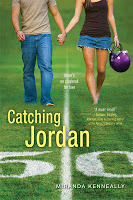
Earlier this year, I blogged about contemporary series books. You should go check out the post, and make sure you read through the amazing list of suggestions from other readers in the comments.
I think this is a trend I'd like to continue seeing, particularly when it comes to those series which aren't contingent upon one another, but instead are companions to one another. There's something nice about contemporary series that show stories don't end when the book ends; often there's more to it. See books like Jo Knowles's Jumping Off Swings and recently-released companion title Living With Jackie Chan.
~*~
Also earlier this year, I wrote about complicated female characters, and all of the books in my post are contemporary YA. This is a topic I keep returning to again and again, and it's something I think about, particularly because I think I'm finding the label of "unlikable" to be damning. It's not that these girls aren't likable. It's that they're complicated, complex, and they're allowed to be who they are, regardless of conventional beliefs of what a good girl is and what a not-good girl is.
In that post, I linked to a few other posts, and I want to follow up with another link, this time to Courtney Summers's outstanding piece called Writing for Girls. She writes:
"There are some people who need to see a girl in a certain way and if she is remotely outside of that box, they dislike it. The general worthiness of a female protagonist as a love interest is a biggie -- male characters can be cold, flawed, and present behaviors bordering on abusive (emotionally and physically) without ever compromising their potential as a love interest. Girls who experience trauma are often dismissed as melodramatic, though a traumatic past will often add to the mystery and desirability of a male character."
I'm still thinking about this, and I'm thinking about it from the perspective of a reader and a person who gets YA books into the hands of other gatekeepers and readers more broadly. How do you sell books with girls who may not be pretty and perfect? Do you apologize for her? Or do you allow her to speak for herself? Does that impact how you interact with girls, too? There's a lot to unpack -- but it's worth unpacking and examining because real girls are complex, challenging, and imperfect. That's how they should be in contemporary realistic fiction, too. And most are...but the responses to many of these girls are definitely interesting.







 Related StoriesContemporary YA Down Under: Australian Realistic Fiction Guest Post by Simmone Howell (Everything Beautiful)Contemporary YA Books Featuring HumorHumor in Contemporary YA Fiction: Guest Post by Maurene Goo (author of Since You Asked. . .)
Related StoriesContemporary YA Down Under: Australian Realistic Fiction Guest Post by Simmone Howell (Everything Beautiful)Contemporary YA Books Featuring HumorHumor in Contemporary YA Fiction: Guest Post by Maurene Goo (author of Since You Asked. . .)
Published on November 14, 2013 10:00
November 13, 2013
Contemporary YA Down Under: Australian Realistic Fiction Guest Post by Simmone Howell (Everything Beautiful)
One of our readers -- more than one, actually -- requested we blog about contemporary YA from Australia, since we're becoming more aware of it as it makes its way to the US. We're familiar, of course, with Melina Marchetta (The Piper's Son and Jellicoe Road), but there are plenty of other Aussies making a splash on this side of the world. Simmone Howell, one such author, is here to talk about what is in the water down under. . . and introduce us to some killer Australian contemporary YA.
In the event you see an Australian book you're interested in and can't get it here or don't want to wait to get it, you can always try searching Fishpond World for a title. Shipping is free (though some have said they've ordered and not received items in the past).

Simmone Howell is the author of Notes from the Teenage Underground, Everything Beautiful and Girl Defective. In her youth she did indeed sink tinnies and chuck punches but now she is more highly evolved and does it through her characters. She lives with her family in Melbourne and likes coffee and Wes Anderson movies. Find her at simmonehowell.com and @postteen on Twitter. Girl Defective will be out with Simon & Schuster Antheneum in fall 2014.
“What’s in the water?” a little think on Australian YA contemporary Fiction
It is a fine and flattering question I get asked sometimes by US writers and readers regarding Australian young adult fiction (ozya). (The Brits rarely ask it, I think because, we’re still part of the Commonwealth, and it would not be done to admire blossoms sprung from convict soil.) What’s in the water? I looked it up. Lots of stuff -- Hydrogen and Oxygen and Flouride.
Australians are self-effacing creatures, inept humble-braggers. Most of the YA authors I know worry that they might be a little bit crap. Australia is not a country for claiming success. It is wrong to think highly of yourself and anyone who does so in public must arm themselves for the storm of abuse! Traditionally, Australian characters fall into these categories: Good Blokes, Lovable Larrikins and Bonza Sheilas.
Our leading men cannot be confident and hunky - there should be issues, a certain attractive inarticulateness. The blurb to Marcus Zuzak’s The Messenger said something like: ‘Ed is in hopeless love with Audrey.’ - and that seems to me to be an eminently Australian condition - in any endeavour there should be the likelihood of failure.
Our leading ladies are emphatically not manic-pixie dreamgirls. Ideally, they should be able to knock back a tinnie, chuck a punch, save their best friend from getting date-raped, get the boy in the end but decide he’s not worth it. They’re multi-taskers and they refuse to be concerned with thigh gap.
Here are some recent reads that definitely have something in the water ...
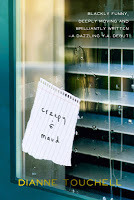 Creepy and Maud by Diane Touchell
Creepy and Maud by Diane Touchell
A sort-of romance between a girl who has trichotillomania and the boy who spies on her. It’s sharp writing, never sentimental, it’s real and sometimes tragic but also full of memorable and funny lines. Creepy, talking about his parents and their disintegrating affection says of his mother: Once upon a time she lovingly washed his skidmarks ...
http://diannetouchell.blogspot.com.au/
I’ll Tell You Mine by Pip Harry
About a goth girl who - due to an incident that is only revealed later - becomes a boarder at the school where she used to be a day-student. Great character and clear prose and this unabashedness about failure that makes the triumphs all that sweeter.
http://www.pipharry.com/
Cry Blue Murder by Kim Kane & Marion Roberts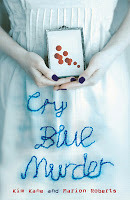
An email correspondence between two teenage girls who are both obsessing over the case of a local girl who’s gone missing. These voices are so true, so full of the minutiea and inertia of being fifteen, and then you know, the subject matter is creepy, depressing - it’s a weird blend of a book and I don’t think I’ve ever read anything like it.
http://www.readings.com.au/news/the-way-we-work-kim-kane-and-marion-roberts
The Dead I Know by Scot Gardner
“Again, I felt something. A change in the weather, a shift in the season, something dawning or something setting. Some tide on the move or moon made full. Stirrings of ancient dust.”There’s usually some point in a Scot Gardner book where I’m lost for words and feeling the hugeness of the world and have to have faith that if there’s a scrap of beauty in there somewhere he will lead me to it!
http://www.scotgardner.com/
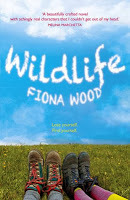 Wildlife by Fiona Wood
Wildlife by Fiona Wood
Love and sex at a school ‘wilderness’ camp. This is beautiful and complicated and hasn’t crossed the water yet but will do so next year - look out for it!
http://fionawood.com/
Obviously there are more. Ozya is chock-full of writers to admire and learn from, and most of them are lovely people. I love to see our books travel - I come over all jingoistic. I was in San Francisco a few weeks ago and saw Cath Crowley’s Graffiti Moon at Green Apple books and I felt quietly thrilled. I’m very excited that my own novel Girl Defective will be published next fall (so long to wait!) and I hope to come over again to lurk in bookstores. Lost and alienated, flawed and funny, my favourite Australian characters are all these things. They fuck up but it’s okay. Go find them!






 Related StoriesContemporary YA Books Featuring HumorContemporary YA Books Featuring Mental IllnessHumor in Contemporary YA Fiction: Guest Post by Maurene Goo (author of Since You Asked. . .)
Related StoriesContemporary YA Books Featuring HumorContemporary YA Books Featuring Mental IllnessHumor in Contemporary YA Fiction: Guest Post by Maurene Goo (author of Since You Asked. . .)
In the event you see an Australian book you're interested in and can't get it here or don't want to wait to get it, you can always try searching Fishpond World for a title. Shipping is free (though some have said they've ordered and not received items in the past).

Simmone Howell is the author of Notes from the Teenage Underground, Everything Beautiful and Girl Defective. In her youth she did indeed sink tinnies and chuck punches but now she is more highly evolved and does it through her characters. She lives with her family in Melbourne and likes coffee and Wes Anderson movies. Find her at simmonehowell.com and @postteen on Twitter. Girl Defective will be out with Simon & Schuster Antheneum in fall 2014.
“What’s in the water?” a little think on Australian YA contemporary Fiction
It is a fine and flattering question I get asked sometimes by US writers and readers regarding Australian young adult fiction (ozya). (The Brits rarely ask it, I think because, we’re still part of the Commonwealth, and it would not be done to admire blossoms sprung from convict soil.) What’s in the water? I looked it up. Lots of stuff -- Hydrogen and Oxygen and Flouride.
Australians are self-effacing creatures, inept humble-braggers. Most of the YA authors I know worry that they might be a little bit crap. Australia is not a country for claiming success. It is wrong to think highly of yourself and anyone who does so in public must arm themselves for the storm of abuse! Traditionally, Australian characters fall into these categories: Good Blokes, Lovable Larrikins and Bonza Sheilas.
Our leading men cannot be confident and hunky - there should be issues, a certain attractive inarticulateness. The blurb to Marcus Zuzak’s The Messenger said something like: ‘Ed is in hopeless love with Audrey.’ - and that seems to me to be an eminently Australian condition - in any endeavour there should be the likelihood of failure.
Our leading ladies are emphatically not manic-pixie dreamgirls. Ideally, they should be able to knock back a tinnie, chuck a punch, save their best friend from getting date-raped, get the boy in the end but decide he’s not worth it. They’re multi-taskers and they refuse to be concerned with thigh gap.
Here are some recent reads that definitely have something in the water ...
 Creepy and Maud by Diane Touchell
Creepy and Maud by Diane TouchellA sort-of romance between a girl who has trichotillomania and the boy who spies on her. It’s sharp writing, never sentimental, it’s real and sometimes tragic but also full of memorable and funny lines. Creepy, talking about his parents and their disintegrating affection says of his mother: Once upon a time she lovingly washed his skidmarks ...
http://diannetouchell.blogspot.com.au/
I’ll Tell You Mine by Pip Harry
About a goth girl who - due to an incident that is only revealed later - becomes a boarder at the school where she used to be a day-student. Great character and clear prose and this unabashedness about failure that makes the triumphs all that sweeter.
http://www.pipharry.com/
Cry Blue Murder by Kim Kane & Marion Roberts

An email correspondence between two teenage girls who are both obsessing over the case of a local girl who’s gone missing. These voices are so true, so full of the minutiea and inertia of being fifteen, and then you know, the subject matter is creepy, depressing - it’s a weird blend of a book and I don’t think I’ve ever read anything like it.
http://www.readings.com.au/news/the-way-we-work-kim-kane-and-marion-roberts
The Dead I Know by Scot Gardner
“Again, I felt something. A change in the weather, a shift in the season, something dawning or something setting. Some tide on the move or moon made full. Stirrings of ancient dust.”There’s usually some point in a Scot Gardner book where I’m lost for words and feeling the hugeness of the world and have to have faith that if there’s a scrap of beauty in there somewhere he will lead me to it!
http://www.scotgardner.com/
 Wildlife by Fiona Wood
Wildlife by Fiona WoodLove and sex at a school ‘wilderness’ camp. This is beautiful and complicated and hasn’t crossed the water yet but will do so next year - look out for it!
http://fionawood.com/
Obviously there are more. Ozya is chock-full of writers to admire and learn from, and most of them are lovely people. I love to see our books travel - I come over all jingoistic. I was in San Francisco a few weeks ago and saw Cath Crowley’s Graffiti Moon at Green Apple books and I felt quietly thrilled. I’m very excited that my own novel Girl Defective will be published next fall (so long to wait!) and I hope to come over again to lurk in bookstores. Lost and alienated, flawed and funny, my favourite Australian characters are all these things. They fuck up but it’s okay. Go find them!







 Related StoriesContemporary YA Books Featuring HumorContemporary YA Books Featuring Mental IllnessHumor in Contemporary YA Fiction: Guest Post by Maurene Goo (author of Since You Asked. . .)
Related StoriesContemporary YA Books Featuring HumorContemporary YA Books Featuring Mental IllnessHumor in Contemporary YA Fiction: Guest Post by Maurene Goo (author of Since You Asked. . .)
Published on November 13, 2013 22:00
Taking Contemporary YA to Book Riot, too

I'm over at Book Riot today with the second post in my "Beyond the Bestsellers" monthly series. This month, I decided it was time to talk about Sarah Dessen. Who should you read or recommend to readers who love Dessen's books? I've got three authors to suggest, along reasons why they make for great fits for Dessen fans.
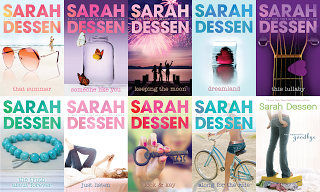
I may have also talked a bit about how much I think Dessen is underappreciated as a force in YA. But just a little bit. It seemed only natural to tie this back to contemporary week.
Go. Read. Enjoy!







 Related Stories"Beyond the Bestsellers" at Book RiotBanned Books at Book RiotAll over the place at Book Riot
Related Stories"Beyond the Bestsellers" at Book RiotBanned Books at Book RiotAll over the place at Book Riot
Published on November 13, 2013 14:00
Contemporary YA Books Featuring Humor
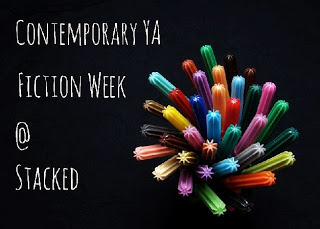
Humor is kind of personal. We all find different things to be funny, so sometimes what one reader considers to be a funny book another reader might not find as humorous. But the nice thing about humor being so personal is that there are so many books that could be considered funny.
Good readers know, too, that funny books are not "easy" books. It takes skill to nail the voice of a funny book and it takes skill to maintain a level of humor throughout a story.
Next month's "Get Genrefied" guide is to YA humor, but because I think it's a category of books we don't talk quite enough about, I wanted to tease out a contemporary-only list of titles that span the last few years. I don't think humorous contemporary books are published at the same pace that books tackling other topics are, so it would be hard to limit my list to titles in just the last two years. So it's a little bit of a broader scope (though not too much -- so yes, I'm missing some older titles).
All of these books are either meant to be humorous throughout or they're books that have a significant amount of page time devoted to being funny. Again, it's a personal call on humor, but I suspect most of these books would be considered funny by the majority of readers.
As usual, the list isn't comprehensive, and all descriptions come from WorldCat. If you can think of other funny contemporary YA, I'd love to know more titles in the comments. I've also limited my list to one book or series per author.
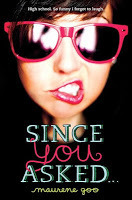
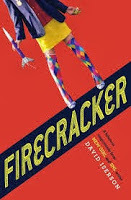
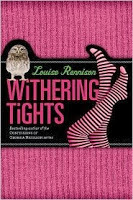
Since You Asked . . . by Maurene Goo: Fifteen-year-old Holly Kim, the copyeditor for her San Diego high school's newspaper, accidentally submits a piece ripping everyone to shreds and suddenly finds herself the center of unwanted attention--but when the teacher in charge of the paper asks her to write a regular column her troubles really start.
Firecracker by David Iserson: Forced to attend public school after being expelled from her elite private school, Astrid earns the enmity of her new peers as a result of her biting wit and competitive worldview until fellow misfits teach her a lesson in humility.
Withering Tights by Louise Rennison (series): Self-conscious about her knobby knees but confident in her acting ability, fourteen-year-old Tallulah spends the summer at a Yorkshire performing arts camp that, she is surprised to learn, is for girls only.
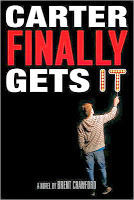
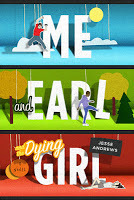
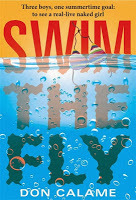
Carter Finally Gets It by Brent Crawford (series): Awkward freshman Will Carter endures many painful moments during his first year of high school before realizing that nothing good comes easily, focus is everything, and the payoff is usually incredible.
Me & Earl & The Dying Girl by Jesse Andrews: Seventeen-year-old Greg has managed to become part of every social group at his Pittsburgh high school without having any friends, but his life changes when his mother forces him to befriend Rachel, a girl he once knew in Hebrew school who has leukemia.
Swim the Fly by Don Calame (series): Fifteen-year-old Matt and his two best friends Sean and Coop, the least athletic swimmers on the local swim team, find their much anticipated summer vacation bringing them nothing but trouble with unsucessful schemes to see a live naked girl and with Matt, eager to impress the swim team's "hot" new girl, agreeing to swim the 100-yard butterfly.
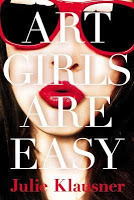
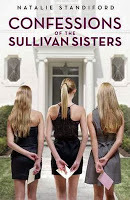
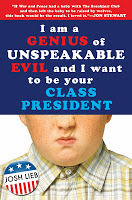
Art Girls Are Easy by Julie Klausner: Fifteen-year-old Indigo Hamlisch is an art prodigy looking forward to her last summer at the Silver Springs Academy for Fine and Performing Arts for Girls. But her BFF Lucy Serrano is a C.I.T. this year, and that means she doesn't have to hang out with Indigo and the other campers anymore: she can mingle with the counselors--including Indigo's scandalous and unrequited crush, paint-splattered art instructor Nick Estep. But it's not like anything is going to happen between Lucy and Nick--right? As Indy becomes more and more paranoid about what's going on between her best friend and her favorite counselor, Indy's life--and her work--spin hilariously out of control.
Confessions of the Sullivan Sisters by Natalie Standiford: Upon learning on Christmas Day that their rich and imperious grandmother may soon die and disown the family unless the one who offended her deeply will confess, each of the three Sullivan sisters sets down her offenses on paper.
I am a Genius of Unspeakable Evil and I Want to Be Your Class President by Josh Lieb: Omaha, Nebraska, twelve-year-old Oliver Watson has everyone convinced that he is extremely stupid and lazy, but he is actually a very wealthy, evil genius, and when he decides to run for seventh-grade class president, nothing will stand in his way.
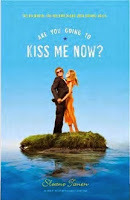

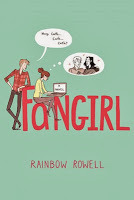
Are You Going to Kiss Me Now? by Sloane Tanen: After winning an essay contest, high school junior Francesca Manning finds herself stranded on an island with five celebrities when their plane crashes on the way to a charity event.
Destroy All Cars by Blake Nelson: Through assignments for English class, seventeen-year-old James Hoff rants against consumerism and his classmates' apathy, puzzles over his feelings for his ex-girlfriend, and expresses disdain for his emotionally distant parents.
Fangirl by Rainbow Rowell: Cath struggles to survive on her own in her first year of college while avoiding a surly roommate, bonding with a handsome classmate who only wants to talk about words, and worrying about her fragile father.
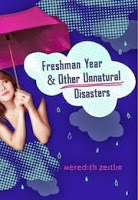
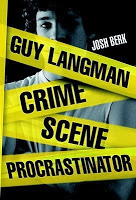
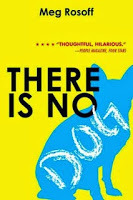
Freshman Year & Other Unnatural Disasters by Meredith Zeitlin: Smart, occasionally insecure, and ambitious Brooklyn fourteen-year-old Kelsey Finkelstein embarks on her freshman year of high school in Manhattan with the intention of "rebranding" herself, but unfortunately everything she tries to do is a total disaster.
Guy Langman: Crime Scene Procrastinator by Josh Berk: Sixteen-year-old Guy Langman, his best friend Anoop, and other members of the school Forensics Club investigate a break-in and a possible murder, which could be connected to the mysterious past of Guy's recently-deceased father.
There is No Dog by Meg Rosoff: When the beautiful Lucy prays to fall in love, God, an irresponsible youth named Bob, chooses to answer her prayer personally, to the dismay of this assistant, Mr. B who must try to clean up the resulting catastrophes.
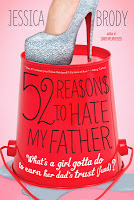
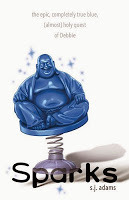
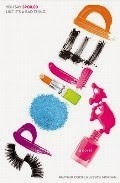
52 Reasons to Hate My Father by Jessica Brody: On her eighteenth birthday, spoiled party girl Lexington Larrabee learns that her days of making tabloid headlines may be at an end when her ever-absent father decides she must learn some values by working a different, low-wage job every week for a year or forfeit her multimillion-dollar trust fund.
Sparks by SJ Adams: A sixteen-year-old lesbian tries to get over a crush on her religious best friend by embarking on a "holy quest" with a couple of misfits who have invented a wacky, made-up faith called the Church of Blue.
Spoiled by Heather Cocks and Jessica Morgan: When her mother dies, sixteen-year-old Molly moves from Indiana to California, to live with her newly discovered father, a Hollywood megastar, and his pampered teenaged daughter.
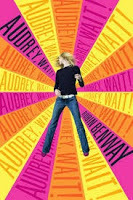
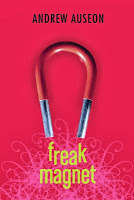
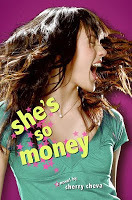
Audrey, Wait by Robin Benway: While trying to score a date with her cute co-worker at the Scooper Dooper, sixteen-year-old Audrey gains unwanted fame and celebrity status when her ex-boyfriend, a rock musician, records a breakup song about her that soars to the top of the Billboard charts.
Freak Magnet by Andrew Auseon: Two teenagers, both burdened by grief and loss, find each other and gradually develop a strong connection.
She's So Money by Cherry Cheva: Maya, a high school senior bound for Stanford University, goes against her better judgement when she and a popular but somewhat disreputable boy start a profitable school-wide cheating ring in order to save her family's Thai restaurant, which she fears will be shut down due to her irresponsible actions.
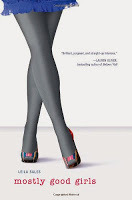
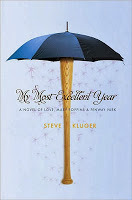
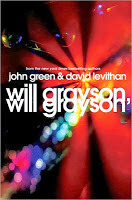
Mostly Good Girls by Leila Sales: Sixteen-year-olds Violet and Katie, best friends since seventh grade despite differences in their family backgrounds and abilities, are pulled apart during their junior year at Massachusetts' exclusive Westfield School.
My Most Excellent Year by Steve Kluger: Three teenagers in Boston narrate their experiences of a year of new friendships, first loves, and coming into their own.
Will Grayson, Will Grayson by John Green and David Levithan: When two teens, one gay and one straight, meet accidentally and discover that they share the same name, their lives become intertwined as one begins dating the other's best friend, who produces a musical revealing his relationship with them both.







 Related StoriesHumor in Contemporary YA Fiction: Guest Post by Maurene Goo (author of Since You Asked. . .)Contemporary YA Books Featuring Mental IllnessPaging Back: Defining "Contemporary" YA, How Much Sex is Okay in YA, and The Value of Teen Friendship
Related StoriesHumor in Contemporary YA Fiction: Guest Post by Maurene Goo (author of Since You Asked. . .)Contemporary YA Books Featuring Mental IllnessPaging Back: Defining "Contemporary" YA, How Much Sex is Okay in YA, and The Value of Teen Friendship
Published on November 13, 2013 10:00
November 12, 2013
Humor in Contemporary YA Fiction: Guest Post by Maurene Goo (author of Since You Asked. . .)
Something I know we don't blog a lot about -- something I don't even see much of in the blogging world more broadly -- are funny books. So today I thought I'd ask debut author Maurene Goo to stop by and talk about humor in contemporary YA fiction. She keeps it short, sweet, and right to the point of why these books are so important (and awesome).
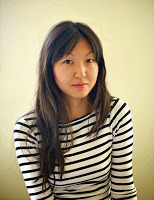
Maurene Goo was born and raised in Los Angeles, California where she navigated her childhood by practicing extreme bossy lord-dom over her many cousins. She studied communication at the University of California, San Diego, and received a master’s degree in publishing and writing at Emerson College. She lives in Los Angeles with her husband and a very old cat.
Why I Need the Lulz
I love comedy. I worship at the feet of comedy writers like Amy Poehler and Mindy Kaling. And it was David Sedaris who first made me fall out of a chair laughing so hard while reading. In fact, he's the one who made me think, "Maybe all this writing stuff I like to do could turn into a book?" Because I relate to comedy. If you look at who I follow on Twitter, it's a whole lot of funny people.
But, I don't just like comic writing because it makes me laugh. I like it because my favorite kinds of comic writing also has heart, it tells an authentic story using humor. And when you write contemporary YA, there's a whole lot of feelings and emotions you have to communicate. So for me, I need the funny to balance things. I know my most powerful tool when telling a story isn't that elusive magic that can make people cry (Rainbow Rowell, anyone?)— it's the ability to make people laugh. (Although, Rainbow Rowell is also hilarious, damn her!)
It's embarrassing, but I still laugh at the jokes in my book, SINCE YOU ASKED. My husband will occasionally find me standing up in the middle of my office, my book cracked open, chuckling. I love being in my main character's head, she genuinely cracks me up. And it's strange to say that, as if her jokes are separate from me, but it really feels that way once it's written down. And really, that's how I know that I liked what I wrote—when I'm standing there like a weirdo enjoying my own book.
***
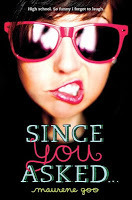
SINCE YOU ASKED… is Maurene's debut novel, about a fifteen-year-old named Holly Kim who is the copyeditor for her high school's newspaper. When she accidentally submits an article that rips everyone to shreds, she gets her own column and rants her way through the school year. Can she survive high school embarrassments, all while struggling to balance her family's traditional Korean values?







 Related StoriesPaging Back: Defining "Contemporary" YA, How Much Sex is Okay in YA, and The Value of Teen FriendshipRomance in Contemporary YA Fiction: Guest Post from Tiffany Schmidt (author of Send Me A Sign)Contemporary YA Books Featuring Mental Illness
Related StoriesPaging Back: Defining "Contemporary" YA, How Much Sex is Okay in YA, and The Value of Teen FriendshipRomance in Contemporary YA Fiction: Guest Post from Tiffany Schmidt (author of Send Me A Sign)Contemporary YA Books Featuring Mental Illness

Maurene Goo was born and raised in Los Angeles, California where she navigated her childhood by practicing extreme bossy lord-dom over her many cousins. She studied communication at the University of California, San Diego, and received a master’s degree in publishing and writing at Emerson College. She lives in Los Angeles with her husband and a very old cat.
Why I Need the Lulz
I love comedy. I worship at the feet of comedy writers like Amy Poehler and Mindy Kaling. And it was David Sedaris who first made me fall out of a chair laughing so hard while reading. In fact, he's the one who made me think, "Maybe all this writing stuff I like to do could turn into a book?" Because I relate to comedy. If you look at who I follow on Twitter, it's a whole lot of funny people.
But, I don't just like comic writing because it makes me laugh. I like it because my favorite kinds of comic writing also has heart, it tells an authentic story using humor. And when you write contemporary YA, there's a whole lot of feelings and emotions you have to communicate. So for me, I need the funny to balance things. I know my most powerful tool when telling a story isn't that elusive magic that can make people cry (Rainbow Rowell, anyone?)— it's the ability to make people laugh. (Although, Rainbow Rowell is also hilarious, damn her!)
It's embarrassing, but I still laugh at the jokes in my book, SINCE YOU ASKED. My husband will occasionally find me standing up in the middle of my office, my book cracked open, chuckling. I love being in my main character's head, she genuinely cracks me up. And it's strange to say that, as if her jokes are separate from me, but it really feels that way once it's written down. And really, that's how I know that I liked what I wrote—when I'm standing there like a weirdo enjoying my own book.
***

SINCE YOU ASKED… is Maurene's debut novel, about a fifteen-year-old named Holly Kim who is the copyeditor for her high school's newspaper. When she accidentally submits an article that rips everyone to shreds, she gets her own column and rants her way through the school year. Can she survive high school embarrassments, all while struggling to balance her family's traditional Korean values?







 Related StoriesPaging Back: Defining "Contemporary" YA, How Much Sex is Okay in YA, and The Value of Teen FriendshipRomance in Contemporary YA Fiction: Guest Post from Tiffany Schmidt (author of Send Me A Sign)Contemporary YA Books Featuring Mental Illness
Related StoriesPaging Back: Defining "Contemporary" YA, How Much Sex is Okay in YA, and The Value of Teen FriendshipRomance in Contemporary YA Fiction: Guest Post from Tiffany Schmidt (author of Send Me A Sign)Contemporary YA Books Featuring Mental Illness
Published on November 12, 2013 22:00
Paging Back: Defining "Contemporary" YA, How Much Sex is Okay in YA, and The Value of Teen Friendship
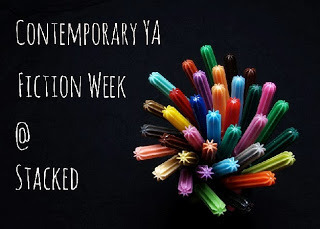
We've tackled romance at STACKED in the not-too-distant past -- Kimberly and I wrote a genre guide to YA romance back in September. And while not all of those books are contemporary, a large portion of them are, and it's fairly easy to parse out those which are from those which aren't.
So instead of reworking a booklist that already exists or creating a duplicate to the great titles Tiffany shared in her post earlier today, I thought it'd be interesting to reshare a few contemporary YA posts from other series and features. I'll pull an excerpt and link to those posts, so you can go back and catch up on prior conversations.
First up, what is contemporary YA fiction?
I wrote this piece last year, as I tried to parse out the differences between "contemporary," "realistic," and "historical" fiction. And even though I think I've nailed down a definition -- at least one that I could work with within the context of a whole book about contemporary YA fiction -- I think it's a definition that's fluid and still not easily nailed down.
"Obviously, this is a subjective line in the sand and it divides some books from others based on an arbitrary time frame. It's something that other people might not hold in the same light I do, and it's something that I think could be argued eight different ways and done so fairly each way. I don't think there will ever be a moment when we as readers or people who think about books and reading choose to arbitrarily separate "realistic" from "contemporary" reads based on the change of years on a calendar. And we shouldn't because, well, it's kind of silly to do that. Rather, I think we do have to think critically about what is and isn't contemporary to today's readers. Veronica Mars isn't contemporary to today's teens. Neither is Buffy. And today's teens -- at least mine -- consider Snow Patrol and Fall Out Boy to be classic rock. They know who Kurt Cobain is, but they don't necessarily know what he is (and I think it's fair that they know who he is because of the legacy surrounding him, since they have no idea who, say, REM is).
Is this musing a lot about a single term? It is. But it's something I've thought a lot about and it's something that has changed meaning in my time reading and reflecting upon what defines contemporary and realistic fiction. For me, realistic is the umbrella term; contemporary falls within that term."
-- from Defining Contemporary, Realistic, and Historical Fiction
~*~
Let's talk a little bit about sex in YA fiction, from a post by Blake Nelson as part of last year's contemporary week:
"Then, around 2000 when I started writing Young Adult books, without really thinking, I just kept including sex scenes. I thought: well the world has evolved, YA is getting more sophisticated, the kids can handle it. They probably appreciate someone telling the truth about such things.
But then TWILIGHT came and I realized that actually the pendulum was swinging the other way. Kids actually preferred less sex. Younger girls especially. Does a 13 year old girl really want to hear the gory details of that stuff? Some of them do, but a lot of them probably don’t. Plus, in a world that was by 2000 so saturated in sex and sexual images and descriptions etc. the really interesting artistic choice might be to go the other way. And talk about pure love, idealistic love, as opposed to the jaded sexual love that had been so popular as I was growing up. In fact: I had kind of preferred that myself, but the world around me had seemed to require sex in novels."
-- from More Love, Less Sex by Blake Nelson
~*~
To round out this short series of snippets from prior posts, I wanted to highlight the excellent post about friendship that Swati Avasthi wrote for us in early October of this year. I feel like this post, as well as Nelson's above, make really interesting companions to Tiffany's today, especially when it comes to the genre of contemporary realistic fiction more broadly.
"In a time of life when I had no idea who I was as a person, who I wanted to be growing up, and who I was as a girlfriend, I knew that one truth. I came of age as a friend. More than boyfriends, more than atheletics, more than even writing, the thing I was sure of was my friendships.
Friendship stories (as compared to romances) are underdone in YA. I don’t feel like I need a whole lot of evidence to prove that – there’s a whole section for paranormal romance in Barnes and Noble and nothing equivalent for friendships. And often when friendships are portrayed in YA, they are portrayed like I had thought of them as a teen – endless, important, fixed. I was loyal to a fault.
But friendships are much more complicated than that, especially when you are young, especially when you are in transition, which most teens are."
-- from Swati Avasthi's Friendship in Young Adult Fiction







 Related StoriesRomance in Contemporary YA Fiction: Guest Post from Tiffany Schmidt (author of Send Me A Sign)Contemporary YA Books Featuring Mental IllnessMental Illness in Contemporary YA: Guest Post from Hilary T. Smith (author of Wild Awake)
Related StoriesRomance in Contemporary YA Fiction: Guest Post from Tiffany Schmidt (author of Send Me A Sign)Contemporary YA Books Featuring Mental IllnessMental Illness in Contemporary YA: Guest Post from Hilary T. Smith (author of Wild Awake)
Published on November 12, 2013 10:00
November 11, 2013
Romance in Contemporary YA Fiction: Guest Post from Tiffany Schmidt (author of Send Me A Sign)
Ready to talk about love in contemporary YA fiction? Today, Tiffany Schmidt talks about the aspects of romance in a novel that just work and she offers up a host of titles to satisfy readers looking for those very things.
And don't forget, you can enter to win an advanced copy of Tiffany's Bright Before Sunrise right here at STACKED.
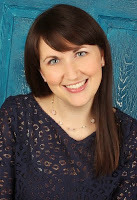
Tiffany Schmidt's first crush was G.I. Joe. Her first hundred or so kisses were with the boy next door (she was a very affectionate toddler). Tiffany now lives with her saintly husband, impish twin boys, and a pair of puggles in Pennsylvania. When she's not writing, she's frequently covered in toddler and puggle kisses--they're both rather drooly, but absolutely priceless. SEND ME A SIGN was her debut novel, BRIGHT BEFORE SUNRISE will follow in February 2014, and the ONCE UPON A CRIME FAMILY series begins in 2015 with HOLD ME LIKE A BREATH.
I love a good love story.
When I ask this question:

I look like this:

And when I read romance, I want to swoon. I’m primed to sigh, let my heart race, and stare dreamily at the pages.

But, wanting to swoon doesn’t mean I will. Swooning has to be earned. (Okay, I’m done with the gifs, I promise!)
Since I was asked to write this post, I’ve been trying to figure out the elements of an effective contemporary YA romance… and if you’re looking for a universal answer, sorry. Romance is personal. It’s as personal as a person can get. It’s why you crush on Person X and your best friend crushes on Person Y. (If you and your best friend are BOTH crushing on Person Z, let’s just hope Person Z is fictional so you can share!)
~*~
Tiffany’s List of Bookish Things That Make Her Swoon #1: More than Attraction
For me, romance is about the give and take of personalities; it’s the way the characters push and influence each other in meaningful ways.
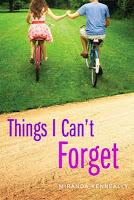 I’m not talking about why they want each other. Why do they need each other? What does each person in the relationship bring out in the other? Not in some epic “I need a boyfriend/girlfriend/significant other to complete me” way -- this isn’t Jerry Maguire and I think we’ve all learned that Tom Couch-Jumper Cruise isn’t exactly a guru for relationship advice. But, what about combining the two halves of the relationship equation makes the whole greater than the parts? How do the characters challenge each other and what do they offer that the other one needs?
I’m not talking about why they want each other. Why do they need each other? What does each person in the relationship bring out in the other? Not in some epic “I need a boyfriend/girlfriend/significant other to complete me” way -- this isn’t Jerry Maguire and I think we’ve all learned that Tom Couch-Jumper Cruise isn’t exactly a guru for relationship advice. But, what about combining the two halves of the relationship equation makes the whole greater than the parts? How do the characters challenge each other and what do they offer that the other one needs?
Good relationships: in fiction and in life, are about that balance of being complimentary and challenging. Being able to be both a safe haven, and a motivation. I love books that show this dynamic, including: Jordan Sonnenblick’s ZEN AND THE ART OF FAKING IT, Miranda Kenneally’s THINGS I CAN’T FORGET, Katie McGarry’s PUSHING THE LIMITS, and my own upcoming BRIGHT BEFORE SUNRISE.
~*~
Tiffany’s List of Bookish Things That Make Her Swoon #2 : Exes that aren’t Evil
Romantic interests shouldn’t be interchangeable sprockets. It shouldn’t just be: he/she is hot, ergo our kisses will be sparky and we should commence a Happily Ever After sequence.
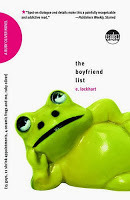 I love when books explore the concept of not-right boyfriend/girlfriends. Not because the guy or girl is abusive or awful, but because it’s not the right time, not the right chemistry… not the right person. Break-ups because things aren’t wrong, but they’re not right can be heartbreaking. They’re realistic and make a sizzling next relationship appear all the more sizzling in comparison.
I love when books explore the concept of not-right boyfriend/girlfriends. Not because the guy or girl is abusive or awful, but because it’s not the right time, not the right chemistry… not the right person. Break-ups because things aren’t wrong, but they’re not right can be heartbreaking. They’re realistic and make a sizzling next relationship appear all the more sizzling in comparison.
Some great books that nail this concept are: the hilarious forthcoming KISSING TED CALLAHAN (AND OTHER GUYS) by Amy Spalding, Jenny Han’s SUMMER series, E. Lockhart’s RUBY OLIVER series, and my SEND ME A SIGN.
~*~
Tiffany’s List of Bookish Things that Make Her Swoon #3: Yearning.
Yearning done well is like sitting in a room where cookies are baking. After being tormented by the aroma of melting chocolate and vanilla for the eleven extra-long minutes it takes for that dough to bake (and, if you’re smart, that extra minute or two so they cool down and don’t burn your tongue) the first bite is even more delicious.
If the author has caught me up in his or her character’s desire, then that first kiss is going to make me flush; that rejection is going to make me want to hug the rejected (and feed them cookies).
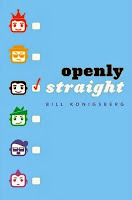 In fact, the want can be so much more appealing than the have. My high school years were full of crushes. Full of daydreams of: could he like me? Will he ever notice me? And semi-stalkerish tendencies to do things like have my best friends help me figure out the routes the different Hes took to their classes so I could create hallway opportunities for them to be dazzled by my ability to blush and smile… and, hopefully, fall for me. After which I’d spend way too much of my own classes writing notes analyzing the way he said “Hello.” Did his head tilt and raised eyebrows mean: A) I’m trying to look hot? (HE WANTS ME TO THINK HE LOOKS HOT!?!) B) I’m confused. Do I know you? Maybe I want to. or C)Why is this crazy girl smiling at me?
In fact, the want can be so much more appealing than the have. My high school years were full of crushes. Full of daydreams of: could he like me? Will he ever notice me? And semi-stalkerish tendencies to do things like have my best friends help me figure out the routes the different Hes took to their classes so I could create hallway opportunities for them to be dazzled by my ability to blush and smile… and, hopefully, fall for me. After which I’d spend way too much of my own classes writing notes analyzing the way he said “Hello.” Did his head tilt and raised eyebrows mean: A) I’m trying to look hot? (HE WANTS ME TO THINK HE LOOKS HOT!?!) B) I’m confused. Do I know you? Maybe I want to. or C)Why is this crazy girl smiling at me?
Um, other people did this too, right?
Throw some obstacles between the book’s characters. Mutual yearning? Yes, please! Give me some almost-kisses, half-confessions, missed-signals, extended gazes, accidental touches. Feed me delicious yearning (or cookies) and I’ll fall in love with you.
For books that excel at this, I suggest Stephanie Perkin’s ANNA AND THE FRENCH KISS, Emery Lord’s upcoming debut OPEN ROAD SUMMER, Polly Shulman’s ENTHUSIASM, and Bill Konigsberg’s funny and achingly real OPENLY STRAIGHT.
~*~
I spent wayyyy more of my teen years crushing than dating. (Based on what I shared above, I know this is a shocking revelation). And the What happens next? part of the romance equation was a mystery I badly wanted to solve.
Maybe this is why Tiffany’s List of Bookish Things that Make Her Swoon #4 is: Books that Transition Beyond the Yearning.
Early in my writing career someone told me: “No one wants to know what happens after the happily ever after. They may think they do, but they don’t.” I’m going to disagree. I loved having crushes. I love crushing along with heroes and heroines. BUT: If being IN a relationship isn’t more fun than the crush from afar -- i.e. you like the IDEA of the person more than the REALITY -- then you’re dating the wrong boy or girl.
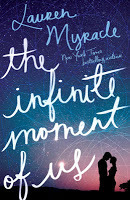 I’d love to see more books where the characters get together earlier in the story. While the yearning portions of books are lovely and make us flip their pages, I’d love to see more stories where healthy romantic relationships are depicted. Where the curtain isn’t dropped with the suggestion of coupling up = happily ever after. Novels that take us past that point and depict a young couple working out some of their early insecurities and issues; that show us the romance and heartache of settling into a relationship. Like the moment when you’ve hung up on your boyfriend/girlfriend for the first time and you’re cradling your phone, praying they’ll know you want them to call back. Or you’ve slammed a door and you hope they’re waiting on the other side figuring out the perfect words to transform the emotions inside you from anger and hurt to comfort and passion.
I’d love to see more books where the characters get together earlier in the story. While the yearning portions of books are lovely and make us flip their pages, I’d love to see more stories where healthy romantic relationships are depicted. Where the curtain isn’t dropped with the suggestion of coupling up = happily ever after. Novels that take us past that point and depict a young couple working out some of their early insecurities and issues; that show us the romance and heartache of settling into a relationship. Like the moment when you’ve hung up on your boyfriend/girlfriend for the first time and you’re cradling your phone, praying they’ll know you want them to call back. Or you’ve slammed a door and you hope they’re waiting on the other side figuring out the perfect words to transform the emotions inside you from anger and hurt to comfort and passion.
Relationships are not a destination. They’re not an end-point. They’re always a journey. They should always be challenging and growing and evolving. Some great books that show this: FANGIRL by Rainbow Rowell, IF I STAY by Gayle Foreman, BOY MEETS BOY by David Levithan, INFINITE MOMENT OF US by Lauren Myracle, and the JESSICA DARLING series by Megan McCafferty.
~*~
Now that you have a sneak peak at some of the things I love about contemporary romance, leave a comment below and tell me what’s on your swoon list or what other romantic books I need to add to my To Be Read pile ASAP!






 Related StoriesContemporary YA Books Featuring Mental IllnessMental Illness in Contemporary YA: Guest Post from Hilary T. Smith (author of Wild Awake)Contemporary YA Week @ STACKED
Related StoriesContemporary YA Books Featuring Mental IllnessMental Illness in Contemporary YA: Guest Post from Hilary T. Smith (author of Wild Awake)Contemporary YA Week @ STACKED
And don't forget, you can enter to win an advanced copy of Tiffany's Bright Before Sunrise right here at STACKED.

Tiffany Schmidt's first crush was G.I. Joe. Her first hundred or so kisses were with the boy next door (she was a very affectionate toddler). Tiffany now lives with her saintly husband, impish twin boys, and a pair of puggles in Pennsylvania. When she's not writing, she's frequently covered in toddler and puggle kisses--they're both rather drooly, but absolutely priceless. SEND ME A SIGN was her debut novel, BRIGHT BEFORE SUNRISE will follow in February 2014, and the ONCE UPON A CRIME FAMILY series begins in 2015 with HOLD ME LIKE A BREATH.
I love a good love story.
When I ask this question:

I look like this:

And when I read romance, I want to swoon. I’m primed to sigh, let my heart race, and stare dreamily at the pages.

But, wanting to swoon doesn’t mean I will. Swooning has to be earned. (Okay, I’m done with the gifs, I promise!)
Since I was asked to write this post, I’ve been trying to figure out the elements of an effective contemporary YA romance… and if you’re looking for a universal answer, sorry. Romance is personal. It’s as personal as a person can get. It’s why you crush on Person X and your best friend crushes on Person Y. (If you and your best friend are BOTH crushing on Person Z, let’s just hope Person Z is fictional so you can share!)
~*~
Tiffany’s List of Bookish Things That Make Her Swoon #1: More than Attraction
For me, romance is about the give and take of personalities; it’s the way the characters push and influence each other in meaningful ways.
 I’m not talking about why they want each other. Why do they need each other? What does each person in the relationship bring out in the other? Not in some epic “I need a boyfriend/girlfriend/significant other to complete me” way -- this isn’t Jerry Maguire and I think we’ve all learned that Tom Couch-Jumper Cruise isn’t exactly a guru for relationship advice. But, what about combining the two halves of the relationship equation makes the whole greater than the parts? How do the characters challenge each other and what do they offer that the other one needs?
I’m not talking about why they want each other. Why do they need each other? What does each person in the relationship bring out in the other? Not in some epic “I need a boyfriend/girlfriend/significant other to complete me” way -- this isn’t Jerry Maguire and I think we’ve all learned that Tom Couch-Jumper Cruise isn’t exactly a guru for relationship advice. But, what about combining the two halves of the relationship equation makes the whole greater than the parts? How do the characters challenge each other and what do they offer that the other one needs?
Good relationships: in fiction and in life, are about that balance of being complimentary and challenging. Being able to be both a safe haven, and a motivation. I love books that show this dynamic, including: Jordan Sonnenblick’s ZEN AND THE ART OF FAKING IT, Miranda Kenneally’s THINGS I CAN’T FORGET, Katie McGarry’s PUSHING THE LIMITS, and my own upcoming BRIGHT BEFORE SUNRISE.
~*~
Tiffany’s List of Bookish Things That Make Her Swoon #2 : Exes that aren’t Evil
Romantic interests shouldn’t be interchangeable sprockets. It shouldn’t just be: he/she is hot, ergo our kisses will be sparky and we should commence a Happily Ever After sequence.
 I love when books explore the concept of not-right boyfriend/girlfriends. Not because the guy or girl is abusive or awful, but because it’s not the right time, not the right chemistry… not the right person. Break-ups because things aren’t wrong, but they’re not right can be heartbreaking. They’re realistic and make a sizzling next relationship appear all the more sizzling in comparison.
I love when books explore the concept of not-right boyfriend/girlfriends. Not because the guy or girl is abusive or awful, but because it’s not the right time, not the right chemistry… not the right person. Break-ups because things aren’t wrong, but they’re not right can be heartbreaking. They’re realistic and make a sizzling next relationship appear all the more sizzling in comparison.
Some great books that nail this concept are: the hilarious forthcoming KISSING TED CALLAHAN (AND OTHER GUYS) by Amy Spalding, Jenny Han’s SUMMER series, E. Lockhart’s RUBY OLIVER series, and my SEND ME A SIGN.
~*~
Tiffany’s List of Bookish Things that Make Her Swoon #3: Yearning.
Yearning done well is like sitting in a room where cookies are baking. After being tormented by the aroma of melting chocolate and vanilla for the eleven extra-long minutes it takes for that dough to bake (and, if you’re smart, that extra minute or two so they cool down and don’t burn your tongue) the first bite is even more delicious.
If the author has caught me up in his or her character’s desire, then that first kiss is going to make me flush; that rejection is going to make me want to hug the rejected (and feed them cookies).
 In fact, the want can be so much more appealing than the have. My high school years were full of crushes. Full of daydreams of: could he like me? Will he ever notice me? And semi-stalkerish tendencies to do things like have my best friends help me figure out the routes the different Hes took to their classes so I could create hallway opportunities for them to be dazzled by my ability to blush and smile… and, hopefully, fall for me. After which I’d spend way too much of my own classes writing notes analyzing the way he said “Hello.” Did his head tilt and raised eyebrows mean: A) I’m trying to look hot? (HE WANTS ME TO THINK HE LOOKS HOT!?!) B) I’m confused. Do I know you? Maybe I want to. or C)Why is this crazy girl smiling at me?
In fact, the want can be so much more appealing than the have. My high school years were full of crushes. Full of daydreams of: could he like me? Will he ever notice me? And semi-stalkerish tendencies to do things like have my best friends help me figure out the routes the different Hes took to their classes so I could create hallway opportunities for them to be dazzled by my ability to blush and smile… and, hopefully, fall for me. After which I’d spend way too much of my own classes writing notes analyzing the way he said “Hello.” Did his head tilt and raised eyebrows mean: A) I’m trying to look hot? (HE WANTS ME TO THINK HE LOOKS HOT!?!) B) I’m confused. Do I know you? Maybe I want to. or C)Why is this crazy girl smiling at me?
Um, other people did this too, right?
Throw some obstacles between the book’s characters. Mutual yearning? Yes, please! Give me some almost-kisses, half-confessions, missed-signals, extended gazes, accidental touches. Feed me delicious yearning (or cookies) and I’ll fall in love with you.
For books that excel at this, I suggest Stephanie Perkin’s ANNA AND THE FRENCH KISS, Emery Lord’s upcoming debut OPEN ROAD SUMMER, Polly Shulman’s ENTHUSIASM, and Bill Konigsberg’s funny and achingly real OPENLY STRAIGHT.
~*~
I spent wayyyy more of my teen years crushing than dating. (Based on what I shared above, I know this is a shocking revelation). And the What happens next? part of the romance equation was a mystery I badly wanted to solve.
Maybe this is why Tiffany’s List of Bookish Things that Make Her Swoon #4 is: Books that Transition Beyond the Yearning.
Early in my writing career someone told me: “No one wants to know what happens after the happily ever after. They may think they do, but they don’t.” I’m going to disagree. I loved having crushes. I love crushing along with heroes and heroines. BUT: If being IN a relationship isn’t more fun than the crush from afar -- i.e. you like the IDEA of the person more than the REALITY -- then you’re dating the wrong boy or girl.
 I’d love to see more books where the characters get together earlier in the story. While the yearning portions of books are lovely and make us flip their pages, I’d love to see more stories where healthy romantic relationships are depicted. Where the curtain isn’t dropped with the suggestion of coupling up = happily ever after. Novels that take us past that point and depict a young couple working out some of their early insecurities and issues; that show us the romance and heartache of settling into a relationship. Like the moment when you’ve hung up on your boyfriend/girlfriend for the first time and you’re cradling your phone, praying they’ll know you want them to call back. Or you’ve slammed a door and you hope they’re waiting on the other side figuring out the perfect words to transform the emotions inside you from anger and hurt to comfort and passion.
I’d love to see more books where the characters get together earlier in the story. While the yearning portions of books are lovely and make us flip their pages, I’d love to see more stories where healthy romantic relationships are depicted. Where the curtain isn’t dropped with the suggestion of coupling up = happily ever after. Novels that take us past that point and depict a young couple working out some of their early insecurities and issues; that show us the romance and heartache of settling into a relationship. Like the moment when you’ve hung up on your boyfriend/girlfriend for the first time and you’re cradling your phone, praying they’ll know you want them to call back. Or you’ve slammed a door and you hope they’re waiting on the other side figuring out the perfect words to transform the emotions inside you from anger and hurt to comfort and passion.
Relationships are not a destination. They’re not an end-point. They’re always a journey. They should always be challenging and growing and evolving. Some great books that show this: FANGIRL by Rainbow Rowell, IF I STAY by Gayle Foreman, BOY MEETS BOY by David Levithan, INFINITE MOMENT OF US by Lauren Myracle, and the JESSICA DARLING series by Megan McCafferty.
~*~
Now that you have a sneak peak at some of the things I love about contemporary romance, leave a comment below and tell me what’s on your swoon list or what other romantic books I need to add to my To Be Read pile ASAP!







 Related StoriesContemporary YA Books Featuring Mental IllnessMental Illness in Contemporary YA: Guest Post from Hilary T. Smith (author of Wild Awake)Contemporary YA Week @ STACKED
Related StoriesContemporary YA Books Featuring Mental IllnessMental Illness in Contemporary YA: Guest Post from Hilary T. Smith (author of Wild Awake)Contemporary YA Week @ STACKED
Published on November 11, 2013 22:00
Kid Lit Con 2013: The Past, Present, and Future of Blogging
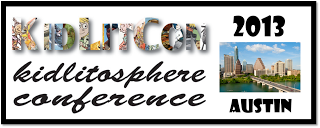
This past weekend was the 7th annual KidLitCon, hosted by the Kidlitosphere, and it was held down in not-so-sunny-in-recent-weeks Austin, Texas. As you may or may not know, Kimberly and myself were part of the planning committee for the event this year, and we took on the tasks of finding locations for the events we had in mind. I think we were successful, since I believe the entirety of the conference was a success. I am glad I went, and I thought I'd recap what I did, as well as what I learned, in hopes of passing along some insight to others who may benefit.
Thursday
Because Austin is one of my favorite places and a former home of mine, I wanted to go down early and get some me-time in before the event. Leila, of Bookshelves of Doom, was one of my roommates, and she, too, came down early. We figured out our flights landed within minutes of one another, so we met up at the airport, took the bus downtown, and then we spent the afternoon with one another.
The first thing we did was grab a late lunch/early dinner at El Sol y La Luna. We stuffed ourselves on Mexican food and then headed on a nice walk down to Book People, where I proceeded to spend more money in a bookstore than I have in a very long time. I convinced Leila to spend some too, and then we hit up Amy's for my favorite ice cream in the world. But by that point, both of us were ridiculously tired and a little cranky (early morning flights!) and we headed back to the hotel.
We spent the evening talking, which was so, so great. We hit on everything from work to blogging and books.
Friday
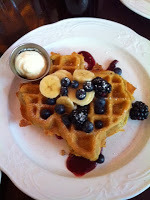 Since the first events weren't until mid-day, Leila and I took the opportunity to go grab breakfast in the morning together. We'd found a place that looked good, but it actually didn't exist anymore. So I suggested we see if The Driskill had a place to eat -- and it did. It's quite possible I had the best pecan waffle I've ever had. Bonus points to it being shaped like Texas.
Since the first events weren't until mid-day, Leila and I took the opportunity to go grab breakfast in the morning together. We'd found a place that looked good, but it actually didn't exist anymore. So I suggested we see if The Driskill had a place to eat -- and it did. It's quite possible I had the best pecan waffle I've ever had. Bonus points to it being shaped like Texas.The pre-con for KidLitCon was taking place at 1 at my old stomping grounds, the iSchool at the University of Texas. The event was open to all, and it was meant to let us get to know other bloggers, authors, and fans of kidlit.
Leila and I got there early, and shortly after, we met author Nikki Loftin. As more people began to show up, I helped get some things set up in the lounge where our meeting was. We'd devised part of the precon to be a chance to swap books and ARCs we'd had, and thanks to the generosity of Bloomsbury and First Second, we also had a couple of boxes of books and ARCs to bring ourselves. Local attendees kept bringing more and more books, and we kept going and seeing what was put out.
In short, book fans in the same room as books equals a lot of talk about books.
The precon was laid back, and it was a nice, low-pressure chance for those of us who knew one another to catch up, as well as a chance to meet new people without feeling overwhelmed.
After the event, we had a reservation at a local Mexican restaurant, where we all dined on plenty of chips, salsa, margaritas, and then delicious dinners. I got the chance to sit with Kimberly and her boyfriend/sometimes guest contributor to STACKED, Matthew, and we caught up with one another.
While a number of KidLitCon folks ended up going to the bar at our hotel after dinner, Leila and I both ended up back in our hotel room, spending hours and hours laying in bed talking. A mixture of exhaustion and needing introvert downtime made this a decision that I can't say I necessarily regret. When Pam came back from the bar, we talked a little more, as well. Though not too much since we had to save some energy for the event.
Saturday
KidLitCon 2013!
It felt like we'd been planning this event forever, but in truth, it all sort of came together pretty quickly. We rented space and catering from St. David's Episcopal Church and I cannot possibly say enough nice things about the venue, the ease of which it was to work with them, the food, and the support we had for our entire event from start to finish. If you're ever in Austin and in need of a space, I would recommend them without a second of hesitation.
If I had to give three words that summed up the biggest themes talked about during the event, they would be diversity, authenticity, and burnout. Every session I went to -- as well as the one I presented -- covered these topics, and I'm going to try to hit upon them in each short writeup, though it'd be impossible not to see the threads coming together.
Our program opened with a wonderful keynote from well-known kid lit enthusiast, supporter, and author Cynthia Leitich Smith.
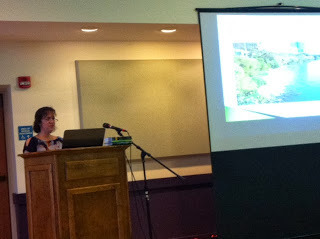
Her talk focused on blogging and how she's come to help build and support the kid lit community through her own blogging, as well as through the sharing and uplifting of other bloggers, both those who are authors and those who aren't. She talked about the value of having a mission and philosophy behind your blogging, stating that hers was to put something positive in the world, as well as to reject the notion that people like her -- a Native woman, a person who adds to the diversity of the world -- could and would do much more than be a single thing.
Some of her advice for bloggers who are feeling burned out or are looking for a means of expanding what it is they do include:
Considering your audience: what are their interests and their expectations? What is it they're taking away from visiting your blog specifically? How does this tie into what your mission and philosophy are?Maintaining your content flow: you can pre-format things sometimes, and you can try to schedule your content strategically.
Take breaks and plan for them to avoid burnout. As she said, it's better to be regular than frequent sometimes. Use your platform: Highlight and talk about the things that matter to you as a blogger. You have the opportunity to talk about diversity and whatever it means to you. So do it. Your readers come to your blog for a reason -- let this be something they take away. Diversity matters and it's not one thing. Diversity means so many things. Think about what it means to you as a blogger and as a reader and talk about it when it's done well as well as when it's not done well. And in all things, be authentic to yourself, to your mission and philosophy, and to your readers. She noted, too, the value of windows and doors in writing and in reading.
Cynthia's speech was easily one of the most engaging and energizing I've seen in a long time. I was impressed, and it really got me thinking about those three things -- burnout, authenticity, and diversity -- in a way I hadn't been before. You avoid the first by contributing to the third by acting with the second (it makes sense, I promise). During her talk, she had screen shots from many of our own blogs to hit on the various points she was making, and it was really effective in hitting those points home.
Also, I had incredible respect for someone who can read 300 blogs a day. Not just impressive, but it's a true sign of being involved with the community at large.
The next session I attended was all about blogger burnout, which was a discussion-style panel moderated by Sarah Stevenson and Jen Robinson. I thought the conversation was so worthwhile and invigorating, despite being about the very opposite. The talk honed in on the factors that cause bloggers to feel burned out and frustrated (it's what anyone who blogs would expect -- low commenting, wondering if anyone is actually reading what you write, feeling overwhelmed by life events, being overwhelmed by what to read and write about next, and all of that combined to feel perhaps your effort isn't necessarily worth it) and then it offered ideas for getting back into the game.
Some of the takeaways from the session include:
Changing your blogging from posting about books when you finish reading them to perhaps talking about them in the middle of your reading. You think about and engage with materials differently then while still talking about them. Develop new features, which can be on anything from what you're passionate about outside of yourself to personal posts. Perhaps you can stop writing reviews at all. If you don't love them -- and we all know and all agree that book reviews receive the least traffic, least engagement, least sharing, and can be at times the least satisfying thing to write -- then don't do them. It takes the pressure off you as a blogger.Give yourself the permission to say no. One of the points that came up that made me feel a little like a jerk was that we at STACKED have a no response policy. It's in our review policy itself. If we're pitched or approached about something and we're not interested, we don't respond. It takes the pressure off our inboxes and our time that we could be blogging or reading that would be spent sending responses. Make it easy to share things. If you want people to share your work, make it easy to do so. I know I am not good at commenting on blogs, but I read a lot, and my sense of appreciation for what people are writing comes through tweeting it out or including it in a link roundup. Do more lists and roundups by topic for new readers, as well as old ones. Share your old content in new ways. Sometimes you don't have to have a brand new post every day, but instead, you can present your older material in a way that's fresh and innovative. The best thing said the entire session was this: if you're blogging your passion, it is special and worth doing. That alone is what makes it stand out. You add diversity to the blogging landscape simply by being a part of it.
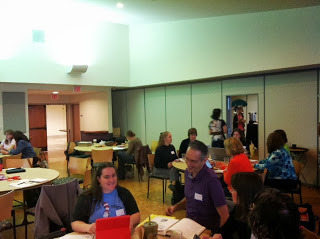
Lee Wind's panel was the next one I attended, and it was entirely about diversity in kidlit. And let me say that Lee was one of the best speakers I've ever seen -- he gave an excellent visual component, but more than that, he was so engaged and interactive with us as audience members.
Like Cynthia hit on, Lee also hit on the idea of books as windows and as mirrors. That there is no such thing as "the other," since we are ALL "the other" ourselves. We just need to recognize that journey in each of us.
He presented some startling statistics about diversity within the kidlit world, which I'm positive most readers have seen at this point, but they're still worth pointing out. For the years of 2011 and 2012, here are some numbers to note (and I believe the population here refers to the US population, but I'd like to be corrected if I'm wrong in my notes):
1.1% of books featured Latino/as. They make up 24% of the population. 2.5% of books feature black people (African American or otherwise). They are 14% of the population. 1.8% of books feature Asians. They make up 4.6% of the population. .6% of books feature Native Americans. They make up .9% of the population..6% of books feature LGBTQ people. They make up 10% of the population.And this is the kicker number for me, in light of today's posts on mental illness: 8% of today's youth, age 12-18, suffer with depressive issues.
So Lee asks us how we can get diversity into our mission as bloggers? He offers these ideas:
Develop booklists and highlight the issues of diversity that matter to you.Think about your site organization and highlight those things which you want to highlight.Consider the keywords to and within your blog.Conduct interviews and ask the hard questions -- the more we press, the more we learn. Pay attention to where you shine your spotlight. You can talk about the tiniest things within a book and that becomes a means of talking diversity. No matter how small it seems, it does matter when you speak up for it. So do it. Pulling out small things is rewarding and it's what makes blogging itself fun and worthwhile. Bloggers do three things: they aggregate content, they create content, and they communicate. Those three things can shine the spotlight on diversity. It's the authenticity of the blogger that makes it even more resonant.
After Lee's talk, it was time for Kimberly and myself to present on critical reviews and why critical reviews matter so much.
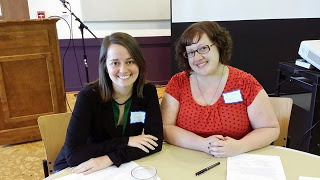
We had a short outline and plans for our talk in the event our ultimate plan of having a group-led discussion failed. But it didn't!
I don't want to go into too much detail about what we hit on because I feel like we've talked about it a lot here. But the big takeaways were that critical reviews matter because they're engaging with the text on a deep and personal level. Because of that, they can get easy to become burned out on, and it's especially true since most people don't share or comment on our reviews -- and we know they're our lowest traffic sorts of posts. We choose to keep doing them, though, because we like them.
Some of the questions which came up were about burnout (it happens all the time and there are ways to combat it), how we feel confident in our own writing to point out some of the things we do (wherein Kimberly talked about impostor syndrome and how sometimes you have to take it with blind faith and that yes, we do bounce things between one another to ensure we're not being crazy), whether we've gotten blowback on posts (we have, and we shared a few anecdotes), and how it is we manage critical reviews (neither of us take notes while reading, but sometimes we'll make notes to ourselves when we finish a book so we don't forget to talk about something). The biggest takeaway I hope people got was that you find your voice the longer you write and that sometimes it's okay to say no.
Further, if you don't feel like reviewing something, don't. Let it go. It's okay. The world won't end, and people won't hate you. It's your blog and you should do only what it is you like doing and want to do. Being authentic to what it is you love is the thing that matters and it should be what pushes you forward.
We'd mentioned a few blogs we thought did excellent critical reviews, and they are the following for those who are curious:
Leila at Bookshelves of DoomAna and Thea at The Book Smugglers Liz at Tea CozyCatie, Flannery, and Tatiana at The ReadventurerSarah and Laura at Clear Eyes, Full ShelvesKaryn and Sarah at the Printz blogBeth at Beth ReadsMaureen at By Singing Light One of the attendees at our panel asked if we'd share some of our favorite personal critical reviews we've done in the past, and it's something I think we'll work on for a more in-depth post on the topic. We have enough prior posts we can round them up and share for those curious about the value of and purpose behind critical reviewing.
I have the best co-blogger, and I am so glad we got the chance to present together.
The blogging the middle grade panel followed ours, and while middle grade isn't my reading strength, I was fascinated (and sort of bothered) by the conversation that ensued about gendered covers. The long and short of it is what I tweeted about after the session, and I'm just going to succinctly summarize them here:
If you tell a boy the book is a "girl book," you are the one instilling the false notion of "boy books" and "girl books."Books do not have a gender. They exist for readers to find. And that's it. Perhaps the biggest point is one that Matthew made: if you have a boy who doesn't want to read a "girly" book, you have a conversation about why there is no such thing as a "girly" book and that there is nothing wrong with reading what interests you, period. No, the panel wasn't about gender and middle grade. But some of the ensuing conversation tackled covers and gendering of covers/book recommendations, so I couldn't help myself. It's an issue that starts with the gatekeepers and trickles down, and so I think it's important to keep that in mind when you are blogging.
The final session of the day was a panel on the past, present, and future of blogging, moderated by Sarah Stevenson, with Lee Wind, Leila Roy, Sheila Ruth, and Jen Bigheart. While I could go on and on about this session, I think the handful of takeaways say it all:
There are no gatekeepers to blogging. You can gain so much from it. And those who find it valuable and find passion in blogging will and do prosper. You are wholly responsible for your own reputation -- and that is empowering.Legitimacy is a constant concern, but if you do the work right, you're legitimate. And most of legitimacy comes simply through being authentic. Book blogging isn't dying, but it might be changing. That doesn't mean blogging will disappear, but the means through which people share and engage may continue growing and evolving. This isn't a bad thing -- it only enriches the field more.
When the day wrapped up at the church, we headed over to our closing dinner at Scholz Garten, where we enjoyed German food and delicious beer and dessert (well...I had dessert, at least). It was a nice way to end the event, as it was casual and we all wanted to sit as near to one another as possible to just connect.
While other people headed to the bar after dinner, some of us were exhausted and instead found ourselves passed out in bed without even bothering to turn off the lights in the hotel room. It was amazing to see everything come together both from the side of an attendee and on the side of coordinating the event. Absolutely no disasters nor crises emerged, and even though KidLitCon was on the smaller side this year, it was no less valuable or fun.
Final Thought. . .

Overall, KidLitCon left me feeling revived about blogging again. There is honestly nothing like being in a room with other bloggers who love the same things you do and who think about the same issues that you do. That so many of us are feeling burned out and tired from blogging -- it was nice to share a camaraderie that wasn't about giving up but instead about finding new ways to build your excitement again. And without doubt, I'm excited again.
This event is always so valuable to me not just as a blogger, but as a person. Because there's really nothing more enjoyable than spending a couple of days with people who love the same things you do and who can talk with you on your level about those very things.








Published on November 11, 2013 14:35



